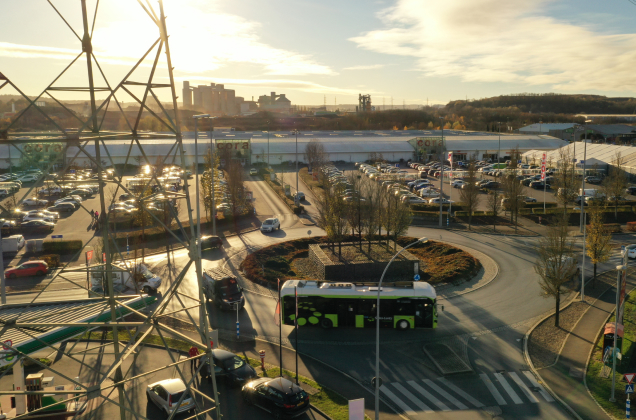The contiguous area of Erpeldange-sur-Sûre and Ingeldorf, known as the central axis, plays a key role in the future socio-economic development of the Nordstad. With a development potential of around 61 hectares, a functional mix and two new railway stations (multimodal hubs) that will improve mobility flows on a national scale, the two localities currently have the greatest development potential in the agglomeration of the Nordstad.
Voir la carte
Adaptation to Climate and Management of Rainwater
ZVI - A life-sustaining space for agglomerations
Adaptation to Climate and Management of Rainwater
The contiguous area of Erpeldange-sur-Sûre and Ingeldorf, known as the central axis, plays a key role in the future socio-economic development of the Nordstad. With a development potential of around 61 hectares, a functional mix and two new railway stations (multimodal hubs) that will improve mobility flows on a national scale, the two localities currently have the greatest development potential in the agglomeration of the Nordstad.
Adapting to the climate means meeting the severe weather challenges that arise and developing strategies that create new opportunities. With this in mind, rainwater retention can no longer be considered a purely technical solution to avoid overloading drains, but must also contribute to the construction of resilient neighborhoods. The presence of ‘blue’ and ‘green’ infrastructure offers social, health and economic benefits, in addition to those associated with preventing major flood damage. Contrary to its often destructive nature, water is of fundamental importance for biodiversity, the climate and above all for protection against flooding itself.
When it comes to urban water management, there are some innovative new concepts, such as that of the “sponge city”. This is based on the principle of defining a global strategy to create sustainable synergies for multifunctional urban development that meets both the expectations of citizens and the requirements of the fight against the effects of climate change. The aim is to put in place a system of rainwater management that, on the one hand, creates the necessary retention space in the event of sudden heavy rainfalls and, on the other, guarantees a reservoir of water for periods of drought to cool the urban climate. The special feature of the “sponge city” concept is to make the urban soil permeable again. This is achieved by re-creating natural spaces through de-sealing and other measures, such as greening rooftops, which have often been neglected in the past due to strong development pressure.
The concept of the “sponge city” has been taken into account in the new urban planning concept for the Nordstad. This area is characterized by the presence of the Wark, Sûre and Alzette rivers, creating a specific topographical situation. The central axis between Ettelbruck and Diekirch, which is reserved for urban development, is, like other parts of the Nordstad, located in a flood zone. This region is therefore particularly prone to sudden heavy rainfall and flooding, with significant consequences that must be taken into account in the urban development of this area. The principles of the “sponge city” have therefore been taken into account in the new ZAN2035+ master plan in order to combine water management and urban development as effectively as possible.
ZVI - A life-sustaining space for agglomerations
The Interurban Green Zone (ZVI) is a rural area located between the agglomeration of Luxembourg City (Agglo-Centre) and the Southern Region. Eaten away by the urban sprawl of the two agglomerations, the landscape is also marked by significant rurbanisation.
This initially agricultural area is now home to major production sites for manufacturing, agriculture and the tertiary sector, as well as major commercial centres, all equipped with a dense network of infrastructure. As a result, this landscape, a source of recreation for some and a productive resource for others, represents a life-sustaining territory for agglomerations in view of the challenges of climate change.
The ZVI is a key area with a high potential in the sense that it contributes greatly to the production of fresh/cool air, is a recreational area for the urban population and can potentially become the vegetable garden for neighbouring urban areas. All of these characteristics are in line with the concepts developed as part of the international consultation.


